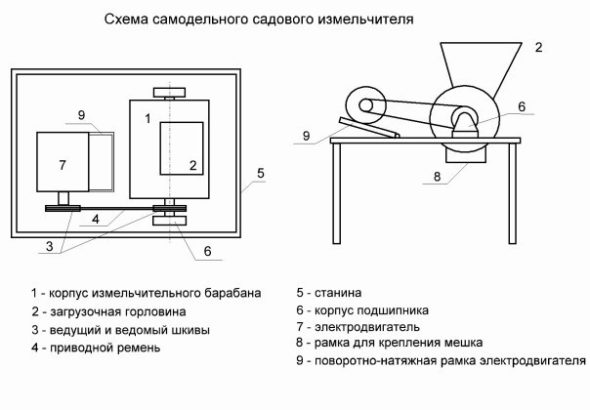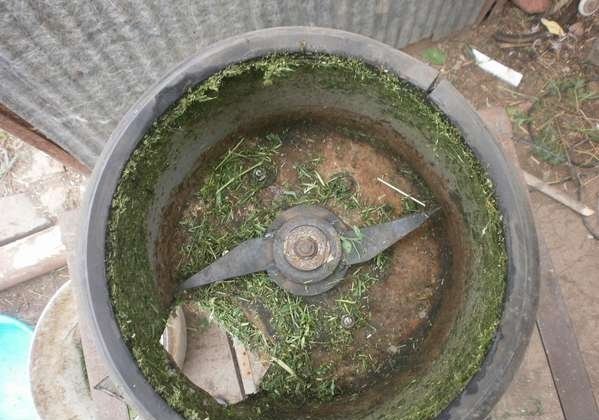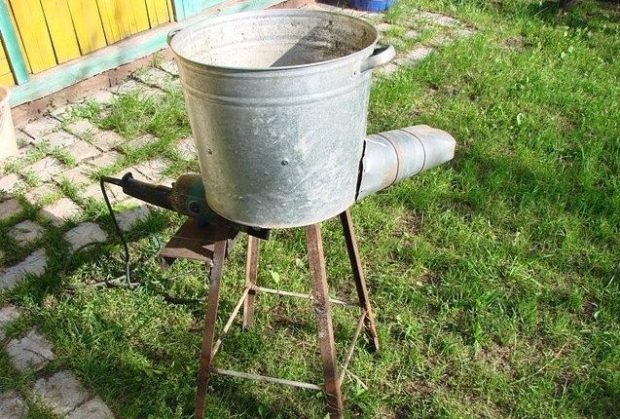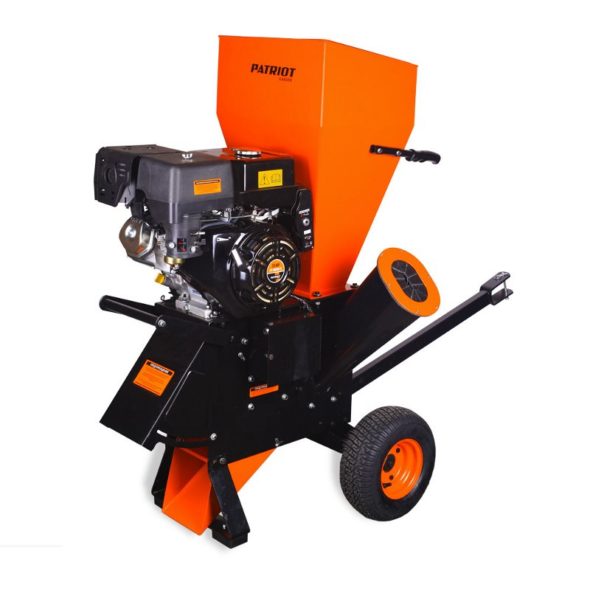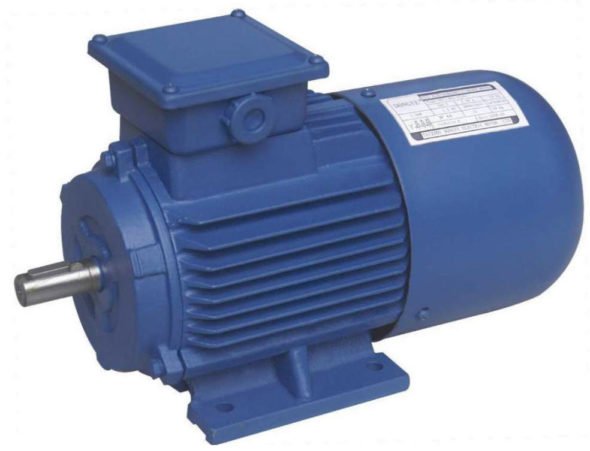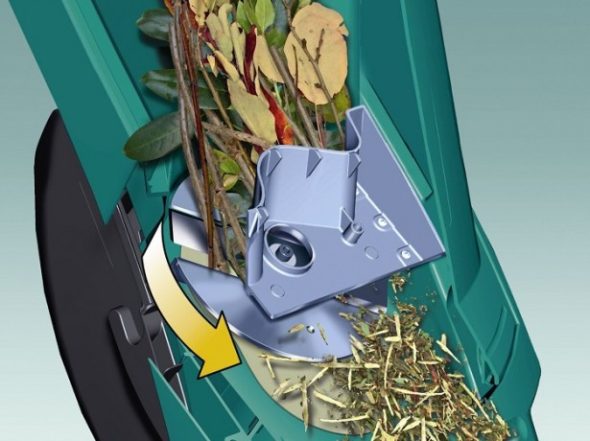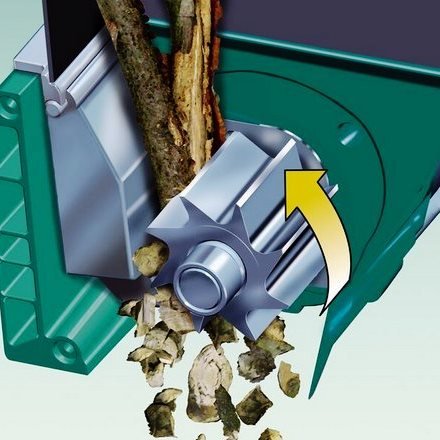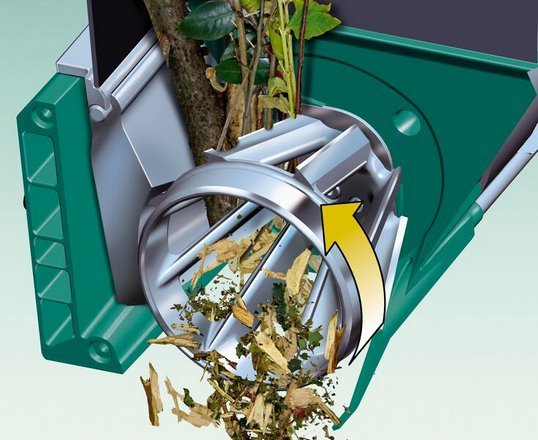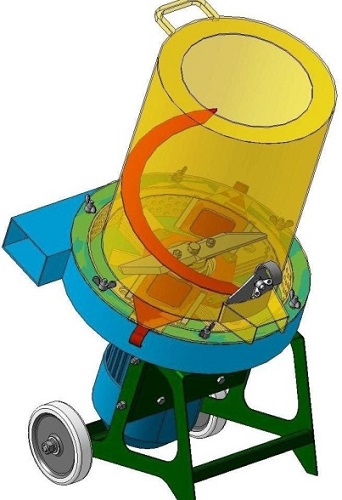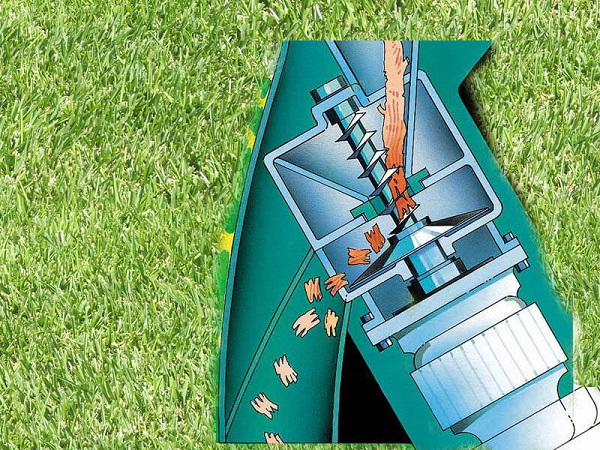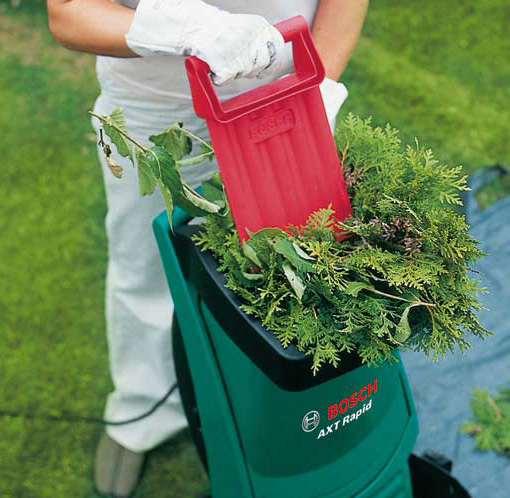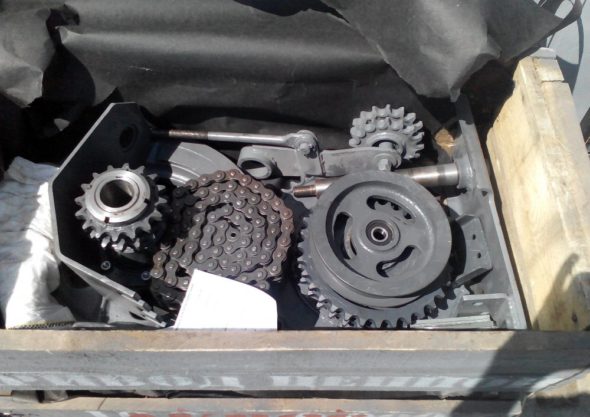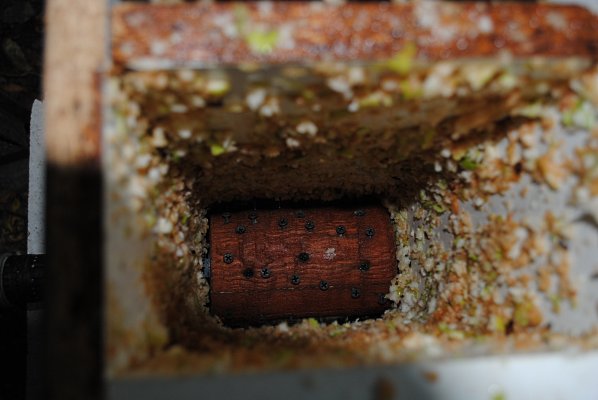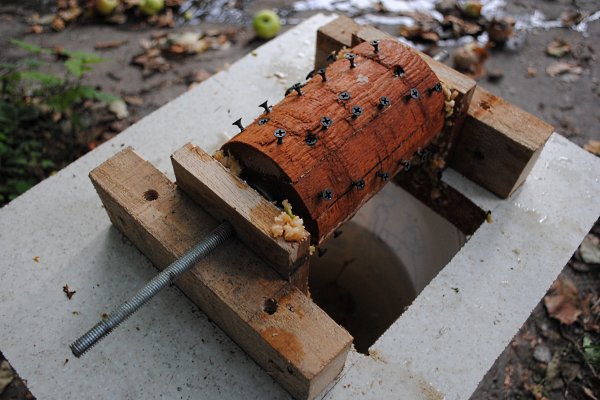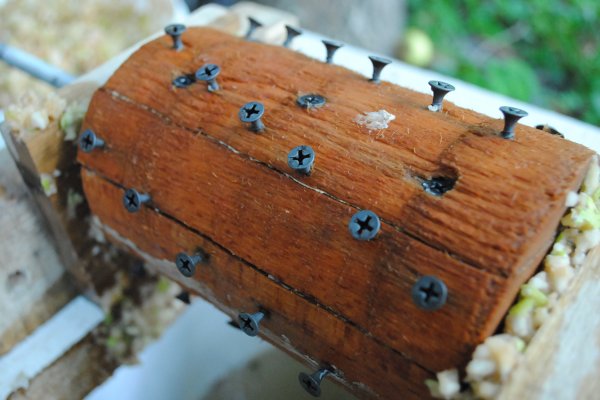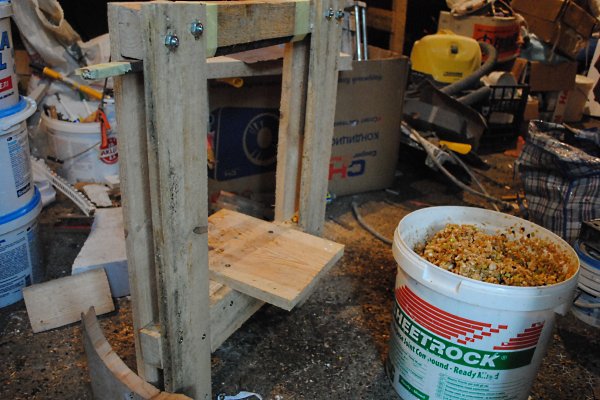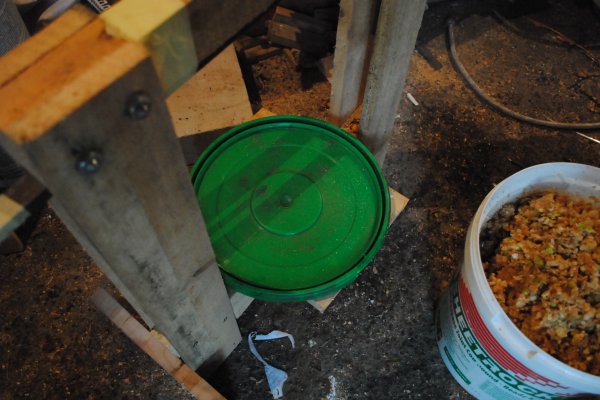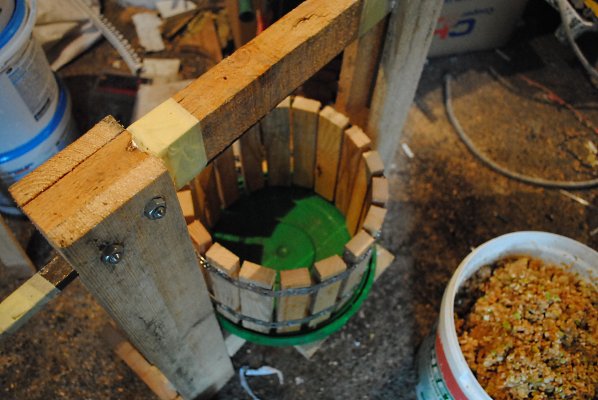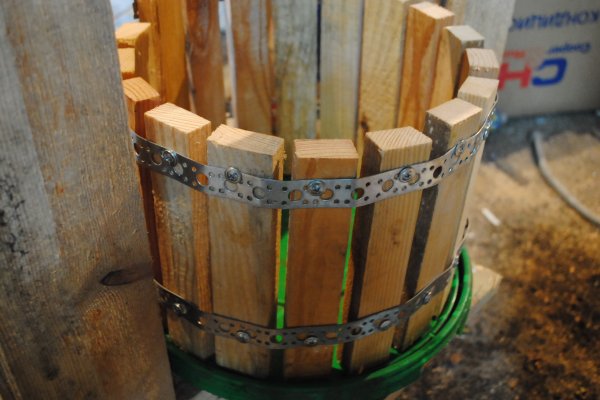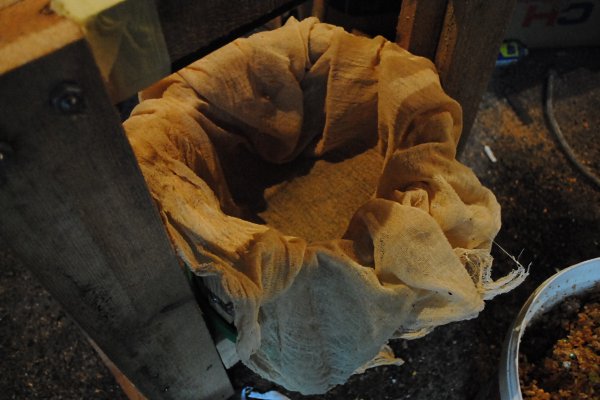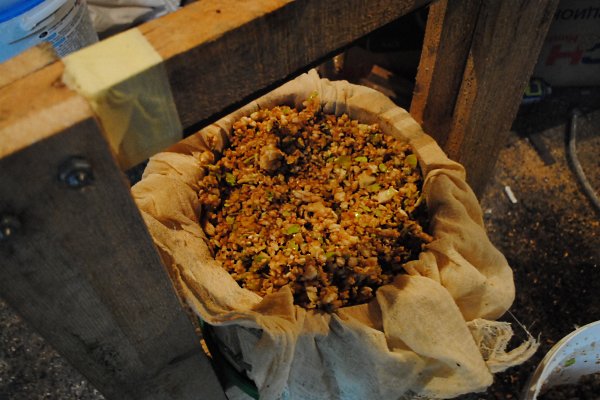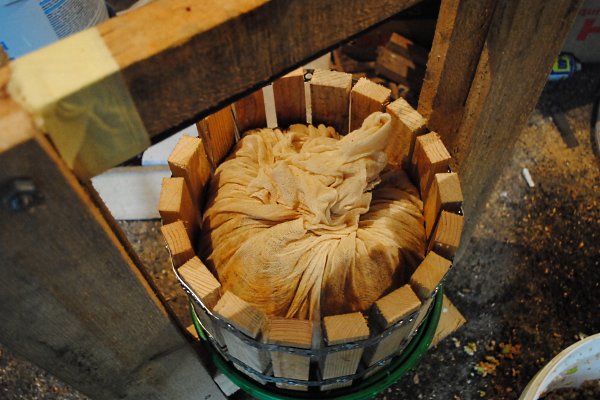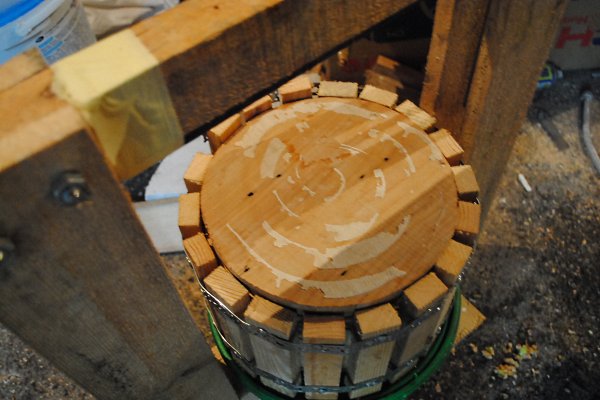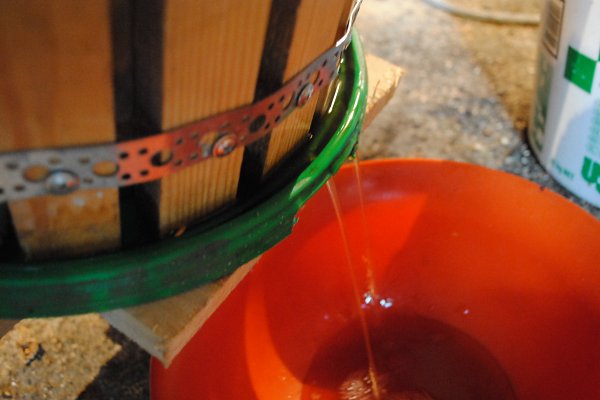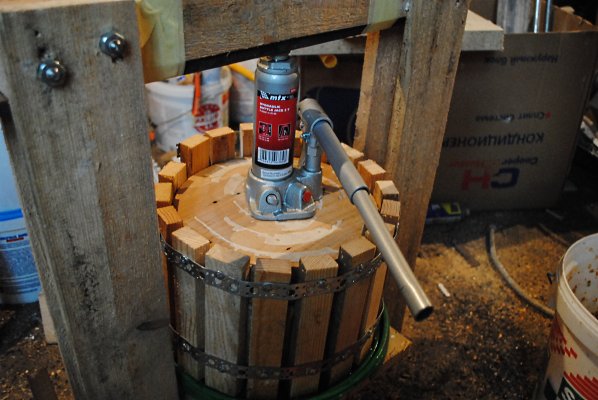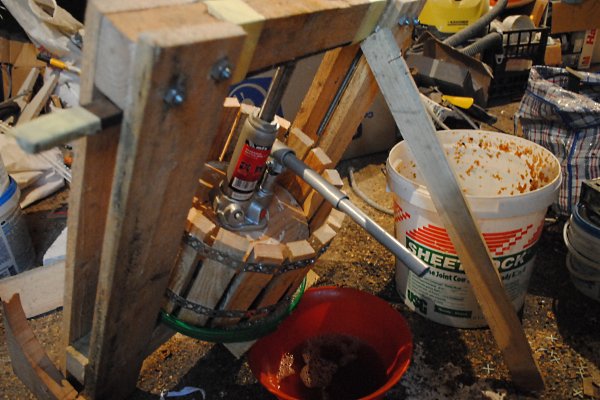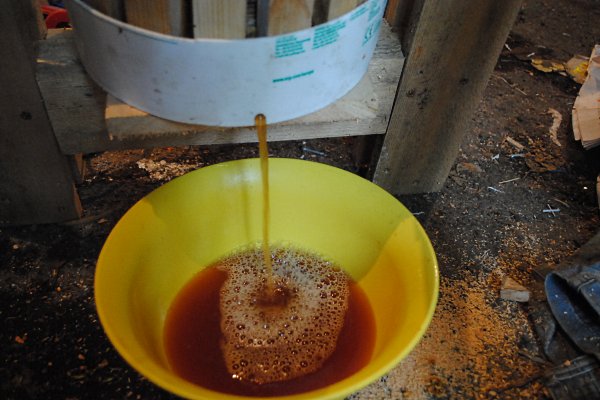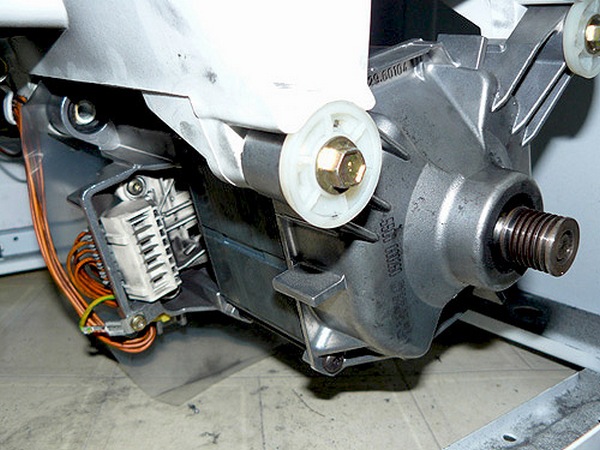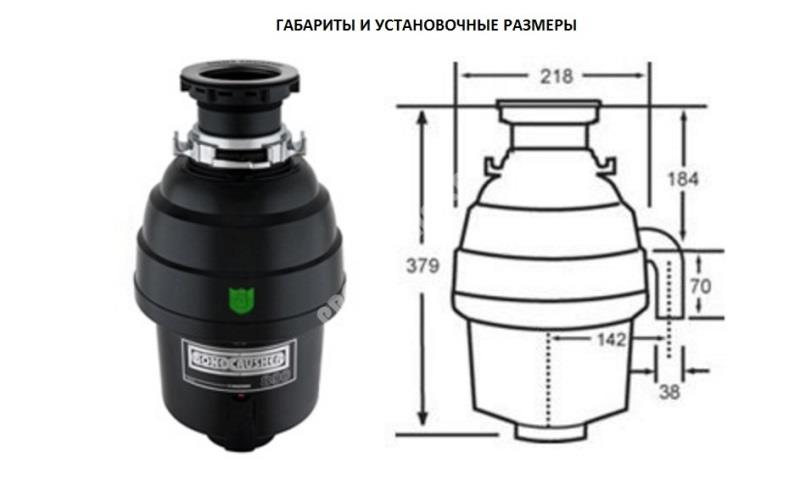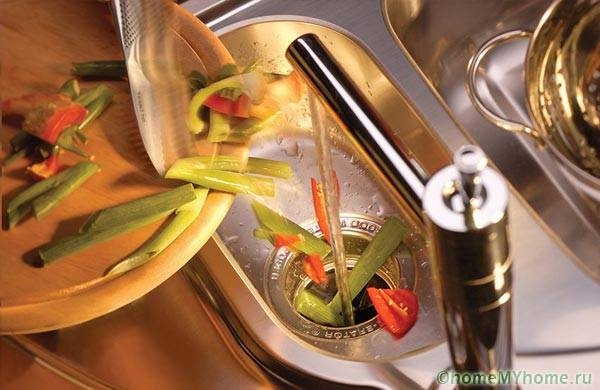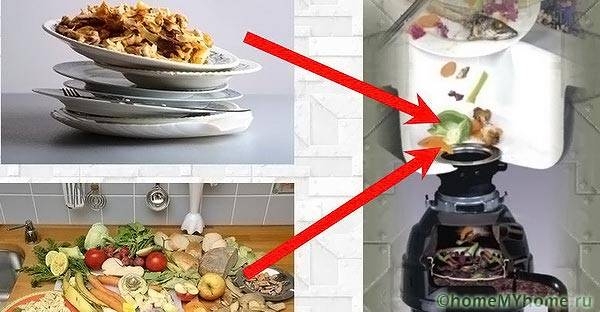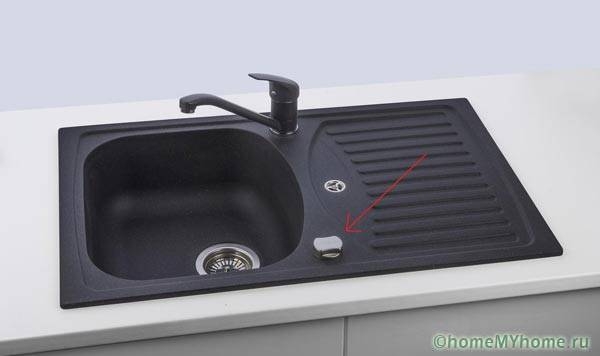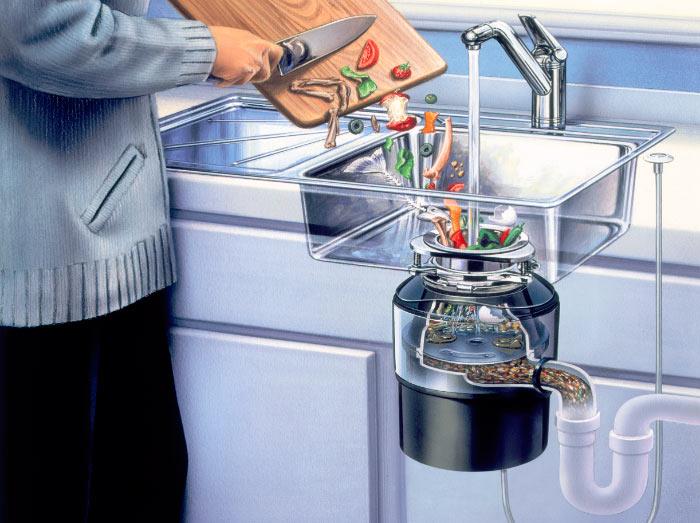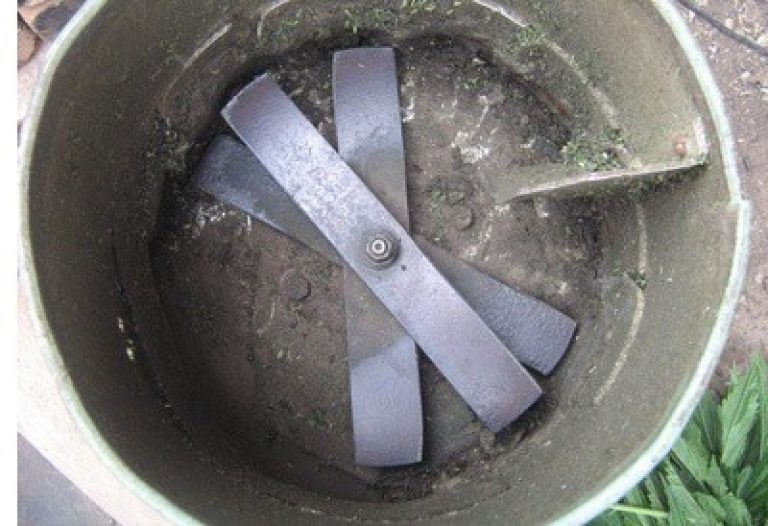The device and principle of operation of the electric garden shredder
A garden shredder can help you get rid of branches and other organic debris.
For self-production of an electric wood shredder, you need to know its structure and principle of operation. In the future, this will help in designing your own design and assembling the unit.
The garden shredder (chitter), regardless of the features of the work, is simple and consists of the following parts and assemblies:
- engine;
- metal frame;
- working shaft (shafts);
- cutting block;
- receiving box;
- flexible or gear transmission;
- protective cover.
For convenience, wheels are installed on the unit, which makes it easier to move the structure around the garden plot.
Scheme of a garden shredder
Works shredder branches as follows. The torque from the electric motor is transmitted to the working shaft by means of a V-belt, chain or gear drive. The ratio of pulleys, sprockets or gears is chosen in such a way that the gear ratio can provide a rotation speed of the main axle of at least 1500 rpm. The crushing of the branches fed into the receiving box is carried out by knives rigidly fixed on the working shaft.
Due to the high speed of rotation, intensive grinding of wood takes place, which, after grinding, is sent to the compost heap. If we consider the design of the shredder through the prism of similar mechanisms, then its principle of operation is similar to the operation of a meat grinder or blender. Despite the rather primitive design, when using a durable knife block and an electric motor with a power of 3–5 kW, the unit can process not only rods into chips, but also cuttings of trees more than 5 cm thick. There are also garden cheaters that grind ten-centimeter branches, however, their design much more complicated, and the principle of operation is more perfect.
Homemade grass grinder from a grinder
A grass grinder from a grinder is a fairly simple and quickly implemented option. To implement the project, you will need to stock up on such details and materials:
- steel corners;
- metal container (ordinary digestion);
- homemade or ready-made knives (for example, from a lawn mower);
- fasteners;
- sheet metal.
From the tools you will need:
- electric drill;
- welding machine and electrodes to it;
- angle grinder to cut corners;
- spanners.
To assemble a shredder with your own hands based on an angle grinder, capable of grinding not only grass, but also branches up to 4 cm thick, it is recommended to use a power tool with a power of over 3 kW.
The creation of a grinding unit is carried out in the following sequence:
- grinder cut the corners into pieces;
- a frame resembling a chair is welded from them;
- weld a shelf from a piece of sheet metal;
- to the frame made (on the stand), the grinder is attached with clamps, placing it with a shaft to the top;
- cut a hole about 10 by 10 cm on the side of the boil;
- a sleeve is attached to the slot, for example, from tin, through which the ground plant mass will be issued from the container;
- make a hole in the center at the bottom of the boil;
- install the container on the shaft of the grinder and attach it with bolts or self-tapping screws to the metal frame;
- put a knife or disc on an angle grinder.
The result is a design shown in the photo below.
The dimensions of the corners are selected individually so that it is convenient to handle the mechanism.
A bucket or other container is placed under the pipe for issuing chopped grass with branches while working with the unit so that the processed plants do not scatter.
The created device can be improved.This will require a nozzle on the grinder shaft about 15 cm long with two knives: at the upper end and in the middle. The blades are separated by a mesh fixed to the casing wall.
Branch shredder classification
When planning the creation of a garden cheater, it is imperative to have an idea of how thick wood waste you will have to deal with. Since all organic waste shredders can be divided according to the power of the electric motor and the principle of operation of the knife block, the maximum diameter of wood chips affects the choice of design, operating parameters and technical characteristics of the unit.
By type of power plant used
Garden shredders can use both electric motors and internal combustion engines. The advantages of the first are simplicity, compactness, ease of use. However, with a gasoline or diesel power unit, you can create a truly mobile plant, and their power allows you to process branches more than 10 cm thick.
Combustion engine shredders are more powerful and more mobile than electric machines
When choosing an electric power unit, the following factors must be taken into account:
- motors up to 1500 W can be used for small amounts of work and the thickness of the rods is not more than 2 cm;
- power plants with a capacity of 3 - 4 kW are the best option for suburban areas with a small garden. With their help, you can crush branches with a diameter of up to 5 cm, which is quite enough for a small private courtyard;
- electric asynchronous machines from 6 kW can process thick branches (from 10 to 15 cm) into chips for a long time and are recommended for use in large farms.
The electric motor provides a homemade shredder with simplicity and low cost
It should be noted that powerful electric motors require connection to three phases. If a conventional two-phase 220 V network is used, then the best way out of the situation is a gasoline or diesel power plant. Its capacity is 5 - 6 liters. With. will suffice in most cases.
According to the design of the knife block
The design of the blade block of the garden shredder determines the diameter of the branches that can be chopped, and what size of processed wood chips will be obtained at the outlet of the unit. For example, the simplest devices can only process thin branches, cutting them into lengths of 2 to 10 cm, while more complex devices can crush thick branches, grinding them into dust or producing pieces 10 - 15 cm long.
The design of factory knives is most often presented in three versions:
- disk-knife block, which is used for grass and twigs with a thickness of not more than 2 cm;
The garden shredder with disc-knife unit has a simple design, but is unable to process thick branches
The use of cutters allows you to work with any organic debris
The use of combined turbine-milling or screw cutting units provides the device with high performance
In home-made designs, it is difficult to repeat the screw or turbine-milling design, so the craftsmen take as a basis one of the following cutting block schemes:
- two-shaft system with several knives;
- disk-knife unit;
- typesetting package of circular saws or cutters.
All three options are available for repetition at home and require a minimum of costs, since in their manufacture parts and assemblies from old automotive and agricultural equipment, pieces of corners, pipes, etc. are used. As for purchased items, you can’t do without them . If there is no electric motor, circular saws or cutters, as well as other parts in stock, then they will have to be bought.
The main components of the garden shredder
To independently assemble a grass and branch chopper (shredder) at home, you must first understand the device of the mechanism, as well as the principle of its operation. This will help to correctly assemble the equipment and, if necessary, make changes to its design.
A home-made unit designed for chopping mowed grass and cut branches up to several centimeters thick has the following main structural units:
- engine;
- knives mounted on the working shaft;
- frame (usually metal);
- protective cover;
- a box designed to receive cut vegetation;
- starting system.
The technique itself can be made in a stationary or mobile form. To create the latter option, you will additionally need wheels, as well as a handle. To make a frame, use metal corners or ready-made frames from workbenches. Boxes for processed vegetation are made from plastic buckets, tin, bags. The protective cover around the knives must be thick and strong enough not to wear out quickly from the impact of the ground vegetation.
The work of the chopper is that the rotation from the motor shaft is transmitted directly to the knives or through a chain / belt drive. Vegetation chopped with blades enters the box. In this case, the final product is immediately ready for use.
According to the principle of operation, some home-made shredders are comparable to a meat grinder (they draw in and then grind organic matter), while others are comparable to a coffee grinder.
TEMPORARY IN REPAIR WE DO NOT ACCEPT
Garden chopper - St. Petersburg - repair in St. Petersburg from the company "Lenremont"
We have a warehouse of necessary spare parts and tools with an area of 90m2.
Please enable Javascript to view this video or use a browser that supports HTML5 video

Place an order for the repair of a garden shredder online and get a 10% discount
You can carry hard, heavy branches and stalks to the waste storage area. Or to arrange a grandiose fire, which still needs to be tried to kindle. Or you can turn it all into easily dragged dust or sawdust.
The whole secret is that you have a garden chopper. Or a chipper. Or a shredder.
But most importantly, you can not throw away the resulting residue, but use it as an ideal and absolutely natural fertilizer.
That is, you can get mulch not in a few hours of exhausting work, but in a matter of minutes. And to keep your garden always clean, your garden shredder should always stay running.

"Lenremont" will help you always have functioning equipment in stock!
We work with both amateur models for home use and professional shredders.
That is, we have craftsmen who understand both electric motors and gasoline-powered garden shredders.
However, before bringing it to us, you can try some simple actions yourself with the following problems:
- The engine does not work - check the voltage in the electrical network, the condition of the power cable. You can also press the overload protection button and the chopper will work. Also check that the clamping handle is properly tightened and that the feed funnel is installed.
- The mechanism does not grind when the engine is running - this happens due to a dirty cutting mechanism. Just clean it up. But if the cutting knives are dull - bring it to us so that we can sharpen or replace them.
- The chopper turns off - start it after a minute. Also check the condition of the power cord or plug.
Another strong recommendation is to carry out scheduled maintenance of the chipper or shredder once a season. It's even written in the instructions.
And if you still need to repair a garden shredder (St. Petersburg), then you can always contact Lenremont, where our professional gardening technicians will quickly and efficiently fix any problem. After carrying out diagnostics and determining the cost of spare parts, the client pays the cost of spare parts before the start of repairs.
So if your garden branch shredders do not chop, call Lenremont by phone +7 (812) 344-44-44. We'll figure it out!
We make a garden crusher at home with our own hands
To make a wood waste utilizer, you will need the ability to handle a welding machine plus a little experience in plumbing. Creating a garden cheat takes place in several stages. At the first stage, the structure is designed based on their own requirements and the availability of materials. On others, they begin to manufacture individual parts, assemble, configure and test the unit.
Necessary materials and tools
To build a wood waste chopper you will need:
- There are two types of steel sheet - 2 mm and 10 mm rolled iron. Thick metal will go to the body of the unit, and thin iron will be needed to assemble the feed box and the protective cover of the drive mechanism.
- Metal corners with a shelf of at least 50 mm - for welding the bed (frame on which the crusher mechanism itself, the receiving hopper and the electric motor are attached);
- Chain, belt or gear drive. For the first two, you will need a pair of pulleys (asterisks) and a V-belt (chain), while for the latter you will need to stock up on two gears of a suitable diameter. All these components can be taken from the gas distribution mechanisms of automobile engines or drives of old combines or other agricultural machinery.
- Knife block. As cutting elements, you can use knives made from automobile springs, circular saws or cutters.
- working shaft. Most likely, this part will have to be ordered from a turner, providing him with a drawing. When designing, do not forget to provide a way to fasten the knife block and drive parts. It is best if the turner makes a longitudinal groove on the shaft for the key.
- Bearings and housings. You can use both used, removed from old mechanisms, and purchased.
- Wheels - It's best to stock up on a pair of sturdy metal wheels, like those used in construction carts or old carts for transporting goods in shops or train stations.
- Electric motor, magnetic starter and wiring.
- Bolts and nuts - for fastening structural elements.
Drive parts can be taken from automotive or agricultural machinery
The tool will need the most common one, which any master owner will always have:
- welding machine;
- electric drill with a set of drills for metal;
- angle grinder (colloquially "grinder");
- grinder (emery);
- set of wrenches;
- hammer;
- metal ruler, tape measure;
- metal marker (scriber).
In addition, the finished product must be painted for weather protection and aesthetics, so you will need a rust converter, primer, and any exterior enamel.
Preparatory work, drawings
As mentioned earlier, the design of a garden shredder includes a frame, an electric motor, a housing, a working shaft (one or more) with installed knives and a receiving hopper. The final form of the finished product directly depends on the chosen scheme and the features of its implementation.
The most important parameter that is taken into account in the design and manufacture of drawings is the location of the working shaft and the type of knives used.
A drawing of a garden shredder using two shafts looks like this: a pair of steel plates with a thickness of at least 10 mm are taken as a body, in which holes for ball bearings are milled.The knives are fixed with an offset relative to each axis of the mechanism. The synchronism of the rotation of the shafts is ensured by the gears fixed on them, to which the torque is transmitted from the electric motor. The design can be used both chain and belt. The calculation of the interaxal clearance is based on the size of the knives, which, in turn, determine the maximum thickness of the processed wood.
A garden shredder is a mechanism designed for the processing of plant waste generated during grass mowing, sanitary or annual pruning of trees, grapes and various shrubs. The resulting small pieces of grass or branches can be used as livestock feed or fertilizer. The use of this unit allows gardeners, owners of summer cottages and lovers of beautiful lawns to get rid of organic debris faster and with less labor. The device is arranged relatively simply, for this reason it can be assembled by hand without any special financial costs from old parts and improvised materials. This allows you to save on the purchase of a ready-made factory device.
What else can you make a chopper
There are many different options for creating garden shredders with your own hands: from the simplest ones, which only allow you to grind grass, to more structurally complex, powerful units designed for wood up to 10 cm thick. Accordingly, the practical implementation of the plan will require different details, different costs of time and money.
To collect equipment for processing plant waste, in addition to the considered options for old or unnecessary tools or equipment, you can use the following devices:
- drill or perforator;
- an old working vacuum cleaner;
- unnecessary power saw;
- pump motor;
- gasoline or electric walk-behind tractor;
- any electric motor of suitable power.
A drill with a perforator, if you use them to grind grass, you don’t need to redo it at all. It is enough to make only a nozzle with blades. The created device will work like a blender, grinding the soft stems of plants in a container in small portions.
Apple crusher
I pick apples and wash them with water from dirt. First of all, I crush apples
in a homemade crusher.
The crusher drive is a small drill with a power of 350 watts, which is enough to crush whole apples.
Apples are poured in small portions into a bunker made from scraps of laminated
Chipboard, and grinded by a drum. The bunker itself is simply placed on top and is not attached to anything,
making it easy to remove for cleaning.
The work table is a piece of laminated worktop (these remain after inserting the sink into the kitchen furniture).
A hole was cut in the tabletop, 60 × 40 mm pine bars were screwed on both sides of it.
In turn, oak planks are fastened with self-tapping screws to pine bars. Drilled into oak planks
holes for the pin on which the crusher drum is mounted. No bearings are used.
The drum is glued together from four pieces of beech board 25 mm thick (an old shelf from the pantry).
The boards are glued together with acrylic glue. The resulting beam 100 × 100 mm is slightly rounded
planer. Then a hole was drilled along the axis and the drum was glued onto a 10 mm diameter stud.
I put the stud with the drum blank in place, securing the long end of the stud in the drill chuck.
When you turn on the drill, we get, as it were, a lathe. The drum rotates with the pin,
and, using a stand from a bar and a chisel, we give it the shape of an almost perfect cylinder.
Having machined the drum, I screwed 25 mm self-tapping screws into it. Self-tapping screws protrude from the wood by about 10 mm.
After the first crushings, the planks were warped due to getting wet and one seam was torn.
I had to re-glue and additionally scroll the entire body of the drum with self-tapping screws 70 mm long.
Fifteen to twenty minutes of crushing, and we already have a bucket of crushed apples, you can proceed to
I squeeze juice. The frame for wringing is assembled from boards and bars, in places on self-tapping screws, in places on studs.
The lid of the putty bucket serves as a tray for the wringing basket. Of course it would be better
use a suitable basin with a flat bottom, in our case just tilt the entire frame
for draining juice.
Place the basket on the pallet. The wringing basket is made of slats 20×35 mm,
fastened together perforated
galvanized mounting tape. The gaps between the rails were set by eye about 1 cm.
Initially, the basket was about 40 cm high, now, about 25 cm. At this height,
a third of a bucket of chopped apples is placed in the basket.
To filter the juice, we put ordinary gauze folded in half in the basket.
Pour crushed apples into the resulting gauze bag.
The free ends of the gauze are brought together and twisted together.
A piston of two circles of beech board (the same one from which the drum is made) is placed on a bag of gauze.
Initially, the piston circles were glued together, but they also warped and the adhesive seam broke.
Since everything works in this form, it makes no sense to glue warped mugs.
Juice begins to run even before the piston is pressed down. Tilt the frame so that the juice flows
into a bowl. Slightly push the piston by hand. Juice is gone!
We install a two-ton car jack on top of the piston. The jack rod rests
into the upper crossbar of the frames reinforced with a strip of metal (to distribute the load).
We tilt the frame for draining the juice into a bowl (we support it with a specially trained rail) and swing the handle of the jack.
The process is in full swing. We squeeze the piston with a jack, wait a bit, we squeeze it again. We give
time to drain the juice. For the time being we can sit down, relax and crack nuts
homemade nutcracker.
After several spins, instead of a lid, we fit a trimmed putty bucket with a drilled drain hole.
As a result, in twenty minutes a bucket of chopped apples turns into 4-5 liters of juice.
Apple juice, squeezed out with your own hands with the help of simple home-made devices. What a yummy!!!
The nuances of operating home-made equipment
A self-made shredder is essentially three in one: a chipper for branches, a straw cutter, a mechanism for cutting grass. It helps to significantly facilitate domestic work associated with the disposal of plant waste, as well as feeding poultry and livestock.
For home-made electrical engineering, it is recommended to install a separate differential machine to provide reliable protection against electric shock in case of unforeseen circumstances. In any case, when making a garden shredder yourself, you must follow the safety rules. It is also worth adhering to them during the operation of the mechanism. It is recommended to wear goggles, suitable protective clothing and check the reliability of fastening of the structural elements before working with the equipment. When creating a home-made unit, the upcoming amount of work, as well as the nature of the processed vegetation, should be taken into account in order to select the engine of the required power and the desired design of the knives. This will allow the device to be made without any problems to cope with the tasks.
Varieties of engines for assembling homemade products
As a drive for homemade products, electric and gasoline engines removed from unused equipment are used. Each of these two options has its own advantages and disadvantages. Models with an internal combustion engine are more convenient because their operation does not require the presence of a power supply nearby.But in general, they are more expensive and have a more complex device than their counterparts equipped with an electric motor. Therefore, it is easier to make electrical equipment, in addition, more compact.
The maximum thickness of cut branches that the wood shredder can grind depends on the power of the electric motor installed on it and the characteristics of the knives.
- Models with a motor up to 1.5 kW power are able to grind sticks up to 20 mm in diameter. They are designed for low intensity work.
- If an electric motor from 3 to 4 kW is installed, then such units can chop branches already up to 40 mm thick.
- More powerful electric motors (over 4 kW) are used to make a wood shredder with a diameter of 7-15 cm.
To create a homemade shredder, you can use electric motors from a grinder, washing machine, trimmer. They must be adapted to work from a stationary network with a voltage of 220 V. In order to shred material of the thickest possible thickness at home, it is recommended to equip the shredder with an electric motor at 1500 rpm with a power of about 3.5 kW. This parameter for internal combustion engines corresponds to 5-6 horsepower.
Engine from an old washing machine
DIY chopper
So, we need to create a so-called chopper with our own hands. First of all, it is worth noting that the device itself can be of various types. It all depends on the material from which it is made. The choice is wide - from wood to metal
But this is not the most important thing in the crusher, it is very important how it does its job.
We will consider a crusher from two types of material at once - metal and wood. We first need a sheet of stainless metal, the thickness of which will be no more than 8 centimeters. From this piece it will be necessary to make steps for the bearings and for the shaft to exit. This stage of work must be done on a lathe.
How to choose a grinder
To make the correct choice of grinder, it is necessary to determine the following parameters:
equipment power. For a family of 3 - 4 people, equipment with a power of 500 - 550 watts is enough. A kitchen grinder with these parameters will successfully cope with the processing of the main types of food waste, except for large bones and some types of nuts. For cafes and restaurants, it is more expedient to purchase more powerful devices (from 1,300 W);
equipment dimensions. When buying a grinder with a large working chamber, a significant amount of garbage can be loaded at the same time, but a device with an enlarged chamber may not fit in the space under the kitchen sink
It is also important to choose the installation dimensions, since if they do not match, it will be necessary to re-equip the sink and sewer;
Chopper size selection
noise level. This parameter is essential when using the disposer in domestic conditions. You can find out data on the noise level from the technical passport of kitchen equipment;
protection against overloads and ingress of other debris
This option is quite important and affects the life of the equipment, as it can prevent many different breakdowns;
availability of additional options. It is more expedient to purchase a device with several operating modes and the possibility of reverse rotation.
The most popular disposer manufacturers are BoneCrusher, Bosch-Siemens and InSinkErator.
What is it, varieties
In the process of cooking, a lot of cleaning, waste is generated. This organic matter cannot be transported through the sewer system due to large fractions.
Large fractions of waste can lead to blockages
The problem is completely solved by a food waste grinder for the sink - a disposer mounted under the sink in front of the sewerage system.
Chopper under the sink
This embedded technology has the following design:
- body - cylindrical shape, has attachment to the sink;
- crushing chamber - made of stainless steel, the walls have a rough coating;
- crushing disc - removable cams made of heavy-duty material;
- engine - mounted in the lower part of the housing, a crushing disk is mounted on the shaft, rotating in a bearing;
- pusher - helps to push the waste into the crushing chamber, ensures the safety of the fingers.
Disposer design
To increase the comfort of operation, there is a noise-absorbing screen immediately under the mounting flange. The chamber is also protected from the outside with noise-insulating material. The dispensers are turned on either by turning the lid or by a separate button.
Disposer power button
There are household shredders with dimensions from 12 cm in diameter, 40 cm in height. Industrial equipment may have its own sinks.
Advantages and disadvantages of a homemade device
There are a lot of advantages of a garden shredder made by one's own hands:
- low cost compared to factory-made equipment;
- the ability to create designs for specific purposes. For example, often recycled branches are used as fuel, which requires special adjustment of the machine to obtain oversized cuts;
- in a home-made design, you can use parts that can be easily found in any garage or workshop;
- a hand-made shredder can be used not only for crushing branches, but also for chopping grass, vegetables and fruits - as pet food or for disposal;
- with the independent manufacture of equipment, it becomes possible to use your mind and erudition, to apply your own skills and abilities. A successfully working design will serve as proof of your viability as an owner, increase self-esteem, and raise authority among neighbors and acquaintances.
As for the shortcomings, there are practically none. The only thing I would like to note is that equipment of this type belongs to the category of hazardous, therefore, in the manufacture of the unit, structural elements should be provided that ensure risk reduction, and during operation, adhere to the rules for handling such mechanisms.
The device and principle of operation of the chopper
A modern food waste disposer is an electrical appliance and operates on a standard 220 watt mains.
The equipment is a body made of metal, inside of which there is a crushing disc.
The principle of operation of the device is as follows:
- when the device is turned on, the crushing disc begins to rotate, which crushes the waste to a size of 3 mm;
- after grinding, the waste is sent to the sewer pipe. Since the size of the incoming food debris is small, the system does not become clogged.
The main elements and principle of operation of the grinder
As a rule, choppers are installed in cafes, restaurants and other catering establishments, but the equipment will also be useful in the domestic sphere, that is, for personal use.
1 Types of crushers for a farm site
Before you do this or that, you should clearly define the type of raw material that it will process. The source material has a different structure and degree of rigidity, respectively, and the equipment for grinding will differ in a number of features.
Branch shredder - an indispensable utilizer of plant waste
According to this criterion, there are:
- apple press;
- grape crusher;
- bone crusher;
- universal chopper (for example for).
Of course, this is not the whole list of possible options. But listed machinery can process most of the agricultural products,
and very easy to make.
1.1
How to make a grass chopper with your own hands?
The electric device for processing hay and grass crops does not require special skills. For its manufacture, there are enough improvised materials. The mechanism consists of a hopper for raw materials, a grinding drum with several knives, a crushing mechanism, a special sieve, an outlet channel and an electric drive.
The whole manufacturing process looks like this:
- First of all, you need to take care of the electric drive. An engine with a power of 800 W or more is suitable as a power plant. More powerful models will give a smaller degree of grinding.
- The second point is the manufacture of the drum. For the walls of the grinding chamber and its base, metal with a thickness of 4 mm is suitable. The height of the drum must be at least 10 cm, the width must be at least 30. A hole is cut in the bottom of the grinder for connection with the drive.
- Next comes the base with a pallet and a hopper for raw materials. They can be made from tin or from a galvanized metal barrel.
- As a cutting element, metal plates (2 or more) are used, which are connected to the drive disk by means of long bolts and sealing washers. If the length of the bolts allows, you can make two levels of knives, which will improve the crushing.
- A do-it-yourself homemade hay crusher ends with an outlet pipe. For him, it is best to use polymer pipes
from water supply or sewerage. They do not corrode and fit in diameter.
Before actively using the device, it must be carefully examined, then all bolt fasteners are tightened and welding joints are checked. Only after this is the first launch carried out. Large straw is suitable as a test raw material.

